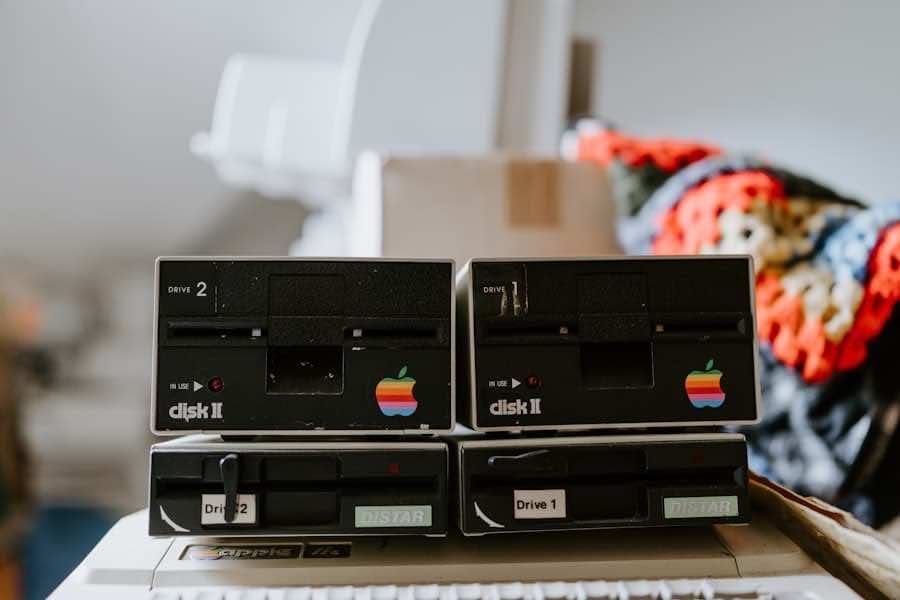Over-the-top (OTT) media refers to the delivery of film and television content via the internet, bypassing traditional cable or satellite television platforms. This model has gained significant traction in recent years, driven by advancements in technology and changing consumer preferences. The term “over-the-top” itself signifies that content is delivered directly to viewers over the internet, without the need for a traditional distribution channel.
This shift has not only transformed how audiences consume media but has also reshaped the entire landscape of the entertainment industry. The rise of OTT media can be attributed to several factors, including the proliferation of high-speed internet access, the widespread adoption of smart devices, and the increasing demand for on-demand content. Consumers are no longer tethered to rigid broadcasting schedules; instead, they can watch their favourite shows and movies whenever and wherever they choose.
This flexibility has led to a surge in the popularity of OTT platforms, which offer a diverse array of content tailored to various tastes and preferences.
Summary
- OTT media refers to the delivery of film and TV content over the internet, bypassing traditional distribution channels.
- Unlike traditional broadcasting, OTT media allows viewers to access content on-demand, across multiple devices, and without the need for a cable or satellite subscription.
- Popular OTT media services and platforms include Netflix, Amazon Prime Video, Hulu, and Disney+, offering a wide range of content for subscribers.
- The growth of OTT media in the digital age has been driven by the increasing availability of high-speed internet and the rise of smart devices.
- OTT media has had a significant impact on the entertainment industry, leading to changes in consumer viewing habits, content production, and distribution models.
How OTT Media Differs from Traditional Broadcasting
The fundamental distinction between OTT media and traditional broadcasting lies in the method of content delivery. Traditional broadcasting relies on terrestrial, satellite, or cable systems to transmit signals to viewers’ televisions. This model often involves a fixed schedule, where audiences must tune in at specific times to catch their desired programmes.
In contrast, OTT media operates on a subscription or ad-supported basis, allowing users to access a vast library of content at their convenience. This shift towards on-demand viewing has fundamentally altered audience behaviour and expectations. Moreover, OTT platforms often provide a more personalised viewing experience compared to traditional broadcasters.
With advanced algorithms and data analytics, these services can recommend content based on individual viewing habits and preferences. For instance, platforms like Netflix utilise sophisticated machine learning techniques to curate tailored suggestions for users, enhancing engagement and satisfaction. This level of personalisation is rarely achievable in traditional broadcasting, where programming decisions are made based on broader audience demographics rather than individual preferences.
Popular OTT Media Services and Platforms

A plethora of OTT media services have emerged in recent years, each vying for a share of the growing market. Some of the most prominent platforms include Netflix, Amazon Prime Video, Disney+, Hulu, and HBO Max. Each of these services offers unique content libraries and features that cater to different audience segments.
For example, Netflix is renowned for its extensive collection of original programming, including critically acclaimed series such as “Stranger Things” and “The Crown.” Its investment in original content has not only attracted subscribers but has also set a benchmark for quality in the industry. Disney+, on the other hand, capitalises on its vast catalogue of beloved franchises, including Marvel, Star Wars, and Pixar. The platform’s family-friendly focus has made it particularly appealing to households with children.
Meanwhile, Amazon Prime Video offers a combination of original content and a vast selection of films and television shows available for rent or purchase. This diverse array of services illustrates how OTT platforms are catering to varied consumer preferences while competing for viewer attention in an increasingly crowded marketplace.
The Growth of OTT Media in the Digital Age
The growth of OTT media has been nothing short of remarkable in the digital age. According to recent statistics, global OTT revenue is projected to reach over $200 billion by 2025, reflecting a compound annual growth rate (CAGR) of approximately 15%. This surge can be attributed to several factors, including the increasing penetration of smartphones and smart TVs, as well as the rising popularity of binge-watching culture.
The COVID-19 pandemic further accelerated this trend, as lockdowns and social distancing measures prompted consumers to seek entertainment options at home. In addition to consumer behaviour shifts, the rise of OTT media has also been facilitated by advancements in technology. The development of faster internet speeds and improved streaming capabilities has made it easier for viewers to access high-quality content without interruptions.
Furthermore, the proliferation of smart devices has enabled audiences to watch their favourite shows on various screens, from televisions to tablets and smartphones. This accessibility has contributed significantly to the rapid expansion of OTT services across different demographics and regions.
The Impact of OTT Media on the Entertainment Industry
The emergence of OTT media has had profound implications for the entertainment industry as a whole. Traditional broadcasters have faced increasing pressure to adapt their business models in response to the growing popularity of streaming services. Many have begun launching their own OTT platforms or partnering with existing services to retain viewership and revenue streams.
For instance, major networks like NBCUniversal have introduced Peacock, while WarnerMedia launched HBO Max to compete directly with established players like Netflix and Disney+. Moreover, the rise of OTT media has transformed content creation and distribution practices within the industry. With lower barriers to entry compared to traditional broadcasting, independent filmmakers and creators now have greater opportunities to showcase their work on global platforms.
This democratization of content distribution has led to a more diverse range of voices and stories being represented in mainstream media. As a result, audiences are exposed to a wider variety of genres and narratives that may have previously been overlooked by traditional networks.
The Challenges and Opportunities of OTT Media for Content Creators

While OTT media presents numerous opportunities for content creators, it also poses several challenges that must be navigated carefully. One significant challenge is the saturation of the market; with an ever-increasing number of platforms vying for viewer attention, standing out from the competition can be daunting. Content creators must not only produce high-quality material but also develop effective marketing strategies to ensure their work reaches its intended audience.
Additionally, monetisation remains a critical concern for many creators in the OTT landscape. While platforms like Netflix offer lucrative deals for original content, others may struggle to secure funding or distribution for their projects. Independent creators often rely on crowdfunding or partnerships with smaller platforms to bring their visions to life.
However, this can lead to compromises in creative control or financial returns. Despite these challenges, the potential for reaching global audiences through OTT platforms remains an enticing prospect for many creators.
The Future of OTT Media and its Potential Innovations
As technology continues to evolve, so too does the potential for innovation within the OTT media landscape. One area ripe for development is interactive content; platforms like Netflix have already experimented with interactive storytelling through projects such as “Black Mirror: Bandersnatch.” This format allows viewers to make choices that influence the narrative outcome, creating a more immersive experience. As audiences increasingly seek engagement beyond passive viewing, interactive content could become a significant trend in the future.
Another promising avenue for innovation lies in virtual reality (VR) and augmented reality (AR) experiences. As these technologies become more accessible and affordable, they could revolutionise how audiences consume media by providing fully immersive environments that enhance storytelling. Imagine watching a film where viewers can explore different settings or interact with characters in real-time; such experiences could redefine entertainment as we know it.
The Role of OTT Media in the Future of Entertainment
The role of OTT media in shaping the future of entertainment cannot be overstated. As consumer preferences continue to evolve towards on-demand viewing experiences, traditional broadcasting models will need to adapt or risk obsolescence. The flexibility and accessibility offered by OTT platforms have fundamentally changed how audiences engage with content, paving the way for new storytelling formats and innovative technologies.
In this rapidly changing landscape, content creators must embrace both the challenges and opportunities presented by OTT media. By leveraging advancements in technology and exploring new narrative possibilities, they can connect with audiences in meaningful ways that transcend geographical boundaries. As we look ahead, it is clear that OTT media will play an integral role in defining the future of entertainment, offering diverse voices and stories that resonate with viewers around the globe.
Over-the-Top (OTT) media has revolutionised the way we consume content, offering a plethora of options for viewers to choose from. As businesses look to take their brand to the next level, they can explore various strategies to enhance their online presence. One such approach is expanding office space to accommodate a growing team and meet the demands of a thriving business. This article on signs it’s time to expand your office space provides valuable insights into the importance of creating a conducive work environment for employees to thrive and drive business growth.
FAQs
What is Over-the-Top (OTT) Media?
Over-the-Top (OTT) media refers to the delivery of film and TV content over the internet, bypassing traditional distribution methods such as cable or satellite TV.
How does OTT media work?
OTT media works by streaming content directly to viewers over the internet, allowing them to access it on a variety of devices such as smartphones, tablets, smart TVs, and computers.
What are some examples of OTT media services?
Popular examples of OTT media services include Netflix, Amazon Prime Video, Hulu, Disney+, and Apple TV+.
What are the benefits of OTT media?
OTT media offers viewers the flexibility to watch content on their own schedule, on a variety of devices, and often at a lower cost than traditional cable or satellite TV packages.
What are the challenges of OTT media?
Challenges of OTT media include the need for a reliable internet connection, potential for buffering or streaming issues, and the fragmentation of content across multiple streaming services.
How is OTT media different from traditional TV?
OTT media differs from traditional TV in that it is delivered over the internet, offers on-demand viewing, and often provides a wider range of content options.
 Managing risk through effective team-based decision making (MP3)
Managing risk through effective team-based decision making (MP3) 